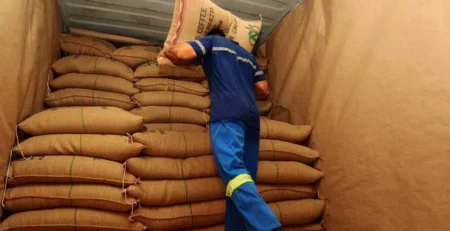EU Ports Test Real-Time Blockchain to Clean Up Customs Chaos

Rotterdam – June 30, 2025
At 4:15 a.m. last Wednesday, a refrigerated truck carrying pharmaceutical goods crossed the Dutch-Belgian border with no hold-up. No paper stamped. No extra check. Just a quick ping in a secure ledger. For customs officers, it was business as usual. For the logistics team watching remotely, it was proof: the system worked.
The “system” in question is a new blockchain customs ledger, built and piloted by TradeVerity, a Rotterdam-based logistics tech firm. It’s not flashy, but it is functional. And for once, blockchain isn’t just an abstract concept.
“Customs data is usually scattered across emails, spreadsheets, and outdated portals,” explains Tomas Heijmans, the firm’s CTO. “Now we’ve tied everything together in a single, tamper-proof thread.”
A Solution Built in the Field, Not the Lab
Unlike previous initiatives pushed by consultants or startups with little supply chain experience, this one was developed with the help of customs officials, shippers, and even truck drivers.
The pilot involved three major EU ports: Rotterdam, Hamburg, and Antwerp. Each site tested the platform over a 90-day cycle. Results? Clearance times dropped an average of 21 to 26 percent. Errors in documentation fell by nearly half.
Real-Time Tracking Without the Noise
The ledger doesn’t run on crypto. There’s no token, no trading, no hype. Just access-controlled blockchain technology designed to verify and timestamp every customs action—bill of lading submitted, inspection completed, invoice reviewed.
“Visibility was always the missing piece,” says Heijmans. “We didn’t build a blockchain for the sake of it. We built it to fix a specific bottleneck that costs businesses hours, sometimes days.”
Quiet Transformation, Not Disruption
This isn’t a headline-grabber, and that’s probably why it’s working. The TradeVerity team avoided overpromising and focused on one task: reduce customs friction.
If the platform gains broader adoption, particularly across southern and eastern EU ports, it could become a model—not just for Europe, but for other customs unions in Africa and Latin America looking for smarter cross-border systems.
The post EU Ports Test Real-Time Blockchain to Clean Up Customs Chaos appeared first on The Logistic News.
Share this post
Related
Posts
Brazil’s Coffee Exporters Hit Capacity Limits at Santos Port as Harvest Peaks
Santos – June 30, 2025 At dawn, a line of trucks waits outside Warehouse 31 in Santos. Each one carries green...
Kenya’s Fresh Produce Exports Struggle as Cold Chain Gaps Hit Cargo Reliability
Nairobi – June 30, 2025 At Jomo Kenyatta International Airport, pallets of roses and green beans are wrapped, sealed, and rushed...
Rerouting Reality: Drought Turns Panama Canal Into a Strategic Risk
Panama City – June 30, 2025 At 6:40 a.m., with the heat already pressing against the steel decks, a bulk carrier...
Mid-Market Logistics Players Turn to Mergers Amid Industry Uncertainty
SINGAPORE – June 30, 2025 It started with a phone call between two competitors. One in Johor Bahru, the other in...




